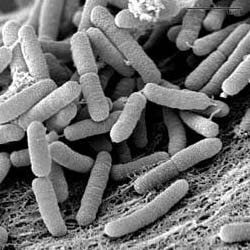
Importation of Plant Material Threatened by Xylella Fastidiosa
Xylella Fastidiosa - Always rated as one of the worst plant diseases with a huge host list but never before seen as having a pathway to NZ. It seems that is changing. In NZ Xylella fastidiosa would threaten not only a number of important export food crops and the nursery and ornamental industries but also a considerable amount of the native flora.
MPI’s ‘Emerging Risks System’ Identified a changing geographic distribution and has enabled Biosecurity to put emergency measures in place.
On the 22nd Feb 2017 MPI called a meeting of industry representatives at the Auckland Airport Holiday Inn to discuss the changing status of Xylella.
What is it? - It is a Proteobacteria which lives in the xylem vessels of the plant and blocks the vessels, causing eventual plant death.
Where has it come from? - It is rife in Colombia, maybe originating in coffee plants, and is transported by plant vectors or sucking insects from plant to plant. Some NZ insects are known to transmit the virus.
What risk does it present? – It has recently emerged and spread rapidly in Europe including the Netherlands from where a lot of new plant varieties originate. The introduction to Europe is thought to be via plant material and that is now the risk to NZ, i.e. that it is introduced in plant [whole plants, cuttings, dormant bulbs] material from Europe.
What plants are hosts? – The host list is huge and growing all the time as the disease spreads to new countries and infects native species. A link below provides more information and a host list.
Xylella fastidiosa is also found in the Americas and the Caribbean as well as India, Iran and Taiwan.
What are the implications for the NZ cut flower industry? –
-
With regard to imported cut flowers, it is not yet known if the Proteobacteria can transfer from a cut flower to a vector insect as it is thought that xylem pressure is needed to enable some sap transfer. Whether this is so or not is under investigation.
-
With regard to the importation of varietal plant material [whole plants, cuttings, dormant bulbs and tissue culture].
There is a question mark over how wide spread it is in the Netherlands as much of our new plant material comes from there. The country certainly has it but many nurseries say they do not have it. The requirements on a current Import Health Standard [IHS] are for an exporting nursery to declare that –
“The plants in this consignment have been grown in a pest free area [name it] or a pest free place of production” [e.g. a pest free nursery] As a provisional measure MPI is now also asking the exporting nursery to provide what proof they have that the ‘area’ or the ‘place’ of production is pest free.
Tissue culture is another area of uncertainty, as it has not yet been established without doubt that the Proteobacteria is transferred via tissue culture. Many nurseries use tissue culture to bulk up large volumes of plants for new varieties, including a number of cut flowers e.g. – Alstromeria and Gerbera.
Plants from tissue culture of any known Xylella host that come from a country identified as having Xylella must go into quarantine for six months over the summer period i.e. the high growth period. Furthermore 1 in 5 [20%] of all plants would have to be tested at a cost of $50/plant before the material could come out of quarantine. Plants going through this process would become very expensive and tend to eliminate the current practice of bulking up direct from tissue culture.
As can be seen the implications for horticulture in NZ are very extensive, perhaps it is time for us to think about doing more development of new varieties ourselves.
Below is a link providing more complete information from MPI Biosecurity along with host lists.
Chris Smellie, NZFGA



 Classifieds
Classifieds



